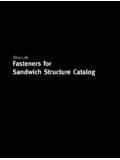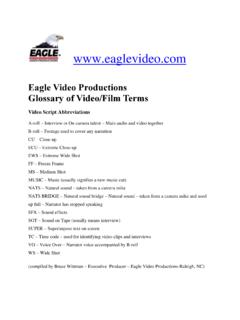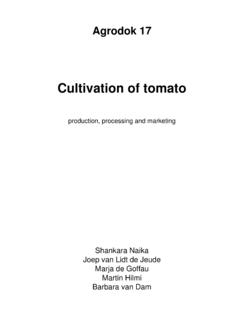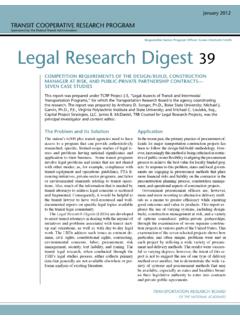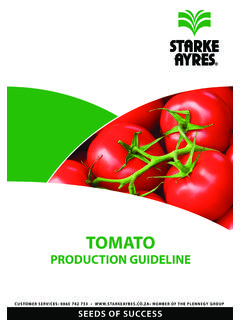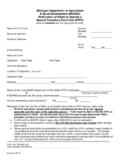Transcription of Shur-Lok Design Manual
1 Design ManualShur-LokFasteners for Sandwich StructureCopyright 1996 by Shur-Lok CorporationTABLE OF CONTENTSS ectionPageINTRODUCTIONWhy Use Sandwich?..2 Sandwich Structure for Sandwich Panel CRITERIAT ransmitting the Design Word About METHODSM olded-In Hole of Potting Compounds of Test OF ILLUSTRATIONSPageTypical Honeycomb Panel Section Load Inserts for Honeycomb Panel Potting Core Undercut for Molded-In Mechanical Self-Retaining Mechanical Drill Provides Two Hole Tension are as old as history itself. From the time thatprehistoric man first used vines and fibers to secure hiscrude shelters, the science of fastening has steadily evolveduntil today it ranks in importance with the mostsophisticated technical operations.
2 Every advanced vehicle,every complex electronic device is largely, if not wholly,dependent on the integrity of its fasteners. Shur-LokCorporation, a pioneer and current frontrunner in the designand manufacture of specialty fasteners for industry,dedicates this document to a thorough comprehension ofthe selection of fasteners for sandwich structures, and totheir proper this goal, it is important for the reader tounderstand the applications and configurations of sandwichcomposites LOKCORPORATION1 SECTION ISECTION 1 INTRODUCTIONWHY USE SANDWICH?When Design requirements demand superior strength-to-weight ratios, sandwich structure is indicated. Inaddition to its high strength, inherent rigidity and minimumweight, sandwich provides the desirable side benefits ofthermal and acoustical , by its very nature, is generally used assheeting or flat panel form, applied to open framework as atransverse web to carry shear loading.
3 In other applications,it acts as a support diaphragm. It serves as both a primaryand secondary load member. And, it is capable oftransmitting extremely high loads when properly attachedto the applications take advantage of its favorably lowweight-to-area ratio. Typically, these include curtain wallsfor decoration or the baffling of sound and light. Suchapplications do not generally consider the inherent loadcapabilities of the sandwich was used only in flat panelapplications-a logical step away from plywood and othersheet panels. Recent improvements, however, in fabricationtechniques and growing industry awareness of sandwichpotential have spurred bolder forms. Today these includecompound curves, skeletonized sections and many complexshapes previously considered STRUCTURE DETAILSThe principal form of sandwich structure is thehoneycomb configuration.
4 This consists of top and bottomface sheets attached to an inner core material; the core ismade of hexagonal cells having walls perpendicular to thefacesheet planes (See Figure 1). Many materials have beenused successfully in honeycomb sandwich includingaluminum, steel, high-temperature alloys, paper, wood,fiberglass and plastics. In some applications honeycombcells are filled with a foam-in-place expanding forms of sandwich consist of face sheets bonded tohomogeneous cores such as foamed plastics or wood. Thevariety is limited only by the state of the art and theimagination of the FOR JOININGR egardless of form, the methods for joining the twoface skins and inner core into a rigid member are 1 Typical Honeycomb Panel Construction2By far the most widely used is that of adhesives applied byany of several techniques, and activated chemically method consists of brushing or spraying theadhesive film over one surface, and subsequentlymating with the second part precoated second approach use prefabricated sheetadhesive.
5 Adhesive, rolled into a thin sheet partiallycured to retain form, is stored between temporarynon-adhering film, ready for bonding technique consists of applying theadhesive with rollers to a scrim or grid cloth, whichis then cut to size and applied between core andface another method simply calls for an evencoating of adhesive on the face skin, which issubsequently activated and applied before all methods, development of optimum strengthdepends on proper preparation of face skins and controlledapplication of adhesive to form optimum fillets betweenmated ends or faces of the core structure. Such bondingoptimization achieves even transmission of loads from faceskins to core without bond forms of sandwich structure which offerexcellent high temperature strength performance arecomposed of all steel honeycomb and face skin.
6 These aremost often resistance welded or of brazed SANDWICH PANEL APPLICATIONSAIRCRAFT INDUSTRYF loor PanelsInterior WallsFood Handling Galley AssembliesWing Control SurfacesPassenger Storage RacksThrust Deflector AssembliesAEROSPACE INDUSTRYC apsule PanelsAblative Shields for Nose ConesInstrumentation Enclosures & ShelvesBulkhead PanelsSpace SatellitesELECTRONICS INDUSTRYE lectronic Radome ConstructionLarge Antenna or Disk ReflectorsMilitary Electronic Instrumentation SheltersShipboard Electronic Deck SheltersTRANSPORTATION INDUSTRYC argo PalletsShipping ContainersRefrigeration PanelsRapid Transit Floor PanelsSpecial Automobile BodiesCONSTRUCTION INDUSTRYA rchitectural Curtain WallsPartitions & Divider PanelsExpandable Hospital SheltersSHUR LOKCORPORATION3 SECTION IISECTION II Design CRITERIATRANSMITTING LOADSOf prime importance to successful utilization of asandwich structure is the method for transmitting loads intoand out of it.
7 By its very nature, sandwich cannot carryconcentrated unit loading. Moreover, modern designerscannot resort to the crude and heavy methods of attachmentthat typified early attempts to fasten of these earlier methods tended to nullify theadvantages of high strength-to-weight ratios because theyused solid sections of fillers or wooden blocks bonded inplace within the structure adding undue weight. These wereinserted by removing sufficient core volume to developrequired strength (See Figure 2).Fortunately for today s designers, sophisticated meansof sandwich attachment have been developed by Shur-LokCorporation. The balance of this section explores the designcriteria for these insert are two primary load forms to be considered:shear and tension (See Figure 3).
8 In many instancesdesigners encounter combinations of these loads in multipledirections. A study of sandwich will reveal that all primaryloading must be carried by the face skins. The cores acts asa stabilizer. Load application must therefore be spread overthe greatest possible area since the face skins are relativelythin. Proper selection of the correct fastener, used insufficient numbers, can achieve the necessary degree ofload from the primary loads, there is a third, thoughless critical load. This is torque, and is usually significantonly if the insert is a threaded variety (See Figure 3). Thetorque generally results from assembly methods rather thanservice 2 - Solid Section FillersFigure 3 Typical toad Forms4 Basically there are two types of fastener inserts forhoneycomb application: the molded-in type and the mech-anical type (See Figure 4).
9 The molded-in type shouldalways be used if possible because it offers several distinctadvantages. Among these is the ability to bond the insert,core and face skins into one rigid unit with the selectedpotting medium. Another advantage is that molded-ininserts are not particularly sensitive to manufacturingvariations within the sandwich structure. Furthermore,bonded parts necessitate a relatively short learning curvefor inexperienced THE Design PARAMETERSThe first logical step in the selection of a fastener is todetermine exactly what is expected of it in the specificFigure 4 Fastener Inserts for Honeycomb Applicationsapplication under study. Typically the designer must knowthe structural arrangements of the joint involved as well asthe loads expected.
10 The sandwich construction mustsimilarly be defined. The following two lists typify designparameters which must be (See Figure 5). thickness of panel? skin thickness? Rigidized or plain? of core? of core and face skins? , curved or tapered surface? molding compound?Figure 5 Sandwich Panel ConsiderationsSHUR LOKCORPORATION5 SECTION IIFastener (See Figure 6). (diameter) of through-mounting member? Boltor rivet? fastener to be through or blind type? installation be flush with surface of face skin? a facing type or standoff head required on eitherend? What diameter? How thick? are torque requirements of threaded type? Isself-locking feature required? material is required for fastener? temperature of installation? load requirements for each fastener?

